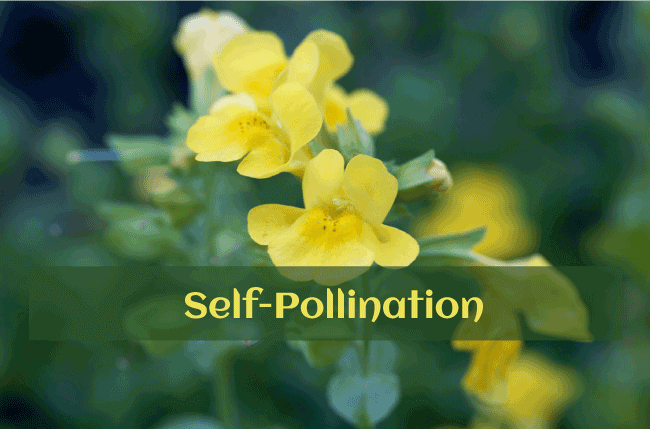
Self-pollination, also known as self-fertilization, occurs when pollen from the same plant or flower is used to fertilize its own ovules. This process has both advantages and disadvantages, which can vary depending on the specific plant species and its ecological context.
Here are some advantages and disadvantages of self-pollination:
Advantages of Self-Pollination:
Reliability: Self-pollination ensures that a plant can reproduce even when pollinators are scarce or absent. This can be particularly beneficial in environments with unpredictable or limited pollinator activity.
Consistency: Self-pollination leads to more consistent genetic traits in the offspring since there is no genetic mixing with other individuals. This can be advantageous if a plant has desirable traits that the parent plant wants to pass on unchanged.
Colonization: Self-pollination can facilitate rapid colonization of new habitats, as a single individual can potentially establish a new population without the need for compatible mates or pollinators in the immediate vicinity.
Isolation: Self-pollination can allow plants to colonize isolated or geographically remote areas where pollinators might not be present.
Stability: Self-pollination can help maintain a stable and successful reproductive strategy in relatively stable and unchanging environments.
Disadvantages of Self-Pollination:
Genetic Diversity: One of the biggest disadvantages of self-pollination is the lack of genetic diversity in the offspring. Genetic diversity is essential for adaptation to changing environments and for the overall health and resilience of populations. Reduced genetic diversity can make a population more susceptible to diseases, pests, and environmental changes.
Accumulation of Harmful Mutations: In self-pollinating populations, harmful mutations can accumulate over generations, leading to a decline in overall fitness and the potential for the expression of deleterious traits.
Limited Evolutionary Potential: The lack of genetic exchange limits the potential for the evolution of new traits through recombination. This can hinder the ability of a species to adapt to new ecological niches or challenges.
Increased Inbreeding: Self-pollination can lead to increased levels of inbreeding, which can result in the expression of recessive genetic disorders and reduced vigor in offspring, a phenomenon known as inbreeding depression.
Dependence on External Factors: If a plant species relies solely on self-pollination, it might face challenges in situations where self-pollination cannot occur due to structural or physiological barriers.
Competition: Since self-pollination doesn't require the involvement of other individuals, it can lead to competition between offspring for limited resources within the same population.
In nature, most plants employ a mix of both self-pollination and cross-pollination strategies, striking a balance between the advantages and disadvantages of each. This allows them to maintain genetic diversity while also ensuring reproductive success in various ecological contexts.
Thank You